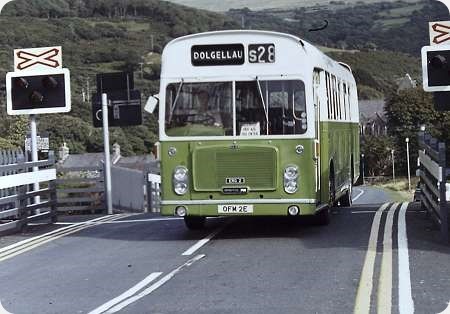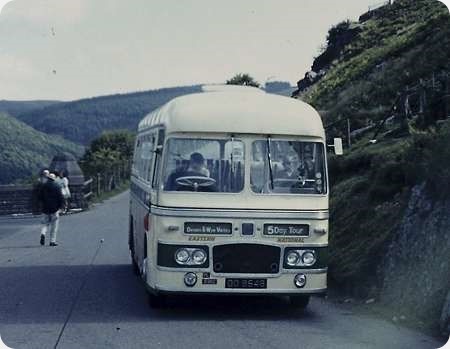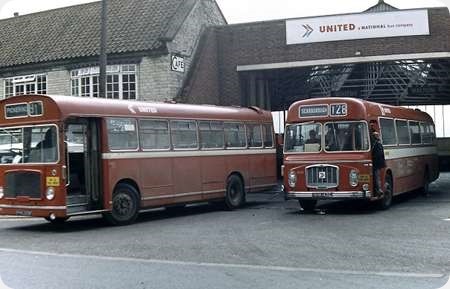Crosville – Bristol RESL6G – OFM 2E – ERG 2
Crosville Motor Services Ltd
1967
Bristol RESL6G
ECW DP42F
Crosville was the first to operate the then latest version of the Bristol RESL with shortened wheelbase and extended front overhang giving a wider entrance door arrangement. These were also the first with this design of ECW body characterised by the shallow flat windscreens.
Crosville put this batch of six into service in July 1967 on the long Rail Replacement service D94 between Wrexham and Barmouth. This served a sparsely populated area with Llangollen, Corwen, Bala and Dolgellau as the intermediate towns of any size. These six were synonymous with this route for many years but here in 1977 is ERG 2 in NBC days crossing the Cambrian Coast Railway line at Fairbourne on the S28 Tywyn to Dolgellau route. The NBC ‘Local Coach’ version of the leaf green livery with white upperworks looks pretty smart.
Photograph and Copy contributed by Ian Wild
10/07/20 – 06:14
I think these were the only dual purpose RESLs in the THC group of companies, although Midland General famously had two RESHs. Some of these vehicles were used elsewhere when brand new; ERG 2 was new to Llandudno Junction, and ERG 3 and 4 were at Caernarfon, although they soon migrated to the D94. Around 1974, A longer example, ERG 272 was transferred to Dolgellau Depot for use on the D94, and ERG2 was then used on other services from Dolgellau as shown here.
When new, these vehicles were painted cream with a green waistband, and they looked superb in that livery. ERG 3 is magnificently preserved in that livery.
Don McKeown
10/07/20 – 06:16
As far as the shorter length RE was concerned, the RESL seems to have been the almost universal choice for bus work but I wonder about it’s merits for dual purpose use, particularly if some of the front seats faced sideways. However, Crosville seemed to like them and as Ian says, used them on some long services although I’m not too sure about the prospect of sitting rather low down or sideways at the front for perhaps a couple of hours or so.
Midland General had a couple of short REs with this type of body but on the RESH chassis, with 43 dual purpose seats, all facing forward. Surprisingly, I believe they were the only ones bodied by ECW.
Chris Barker
16/07/20 – 10:16
United used the long version of the dual purpose RE on the five and a half hour 505 Newcastle to Edinburgh via Berwick service – not to my mind the most suitable of vehicles, and the seats were not especially comfortable. The route was jointly operated by Eastern Scottish who used Leyland Leopards and AEC Reliances with Alexander Y Type coach bodies. These were much more comfortable to ride on and seemed better suited to the route, although with the disadvantage of high entrance steps. The RELLs would be replaced after a few years by dual purpose RELHs with all forward facing seats and they in turn were replaced by downgraded RELH coaches, originally used on the Newcastle to London service. They would I suppose have been about ten years old then, but were still superb vehicle to travel on, however by that time, the service was being operated in two parts with passengers required to change vehicles at Berwick.
John Gibson
Quick links to the - Comments Page - Contact Page - Home Page



